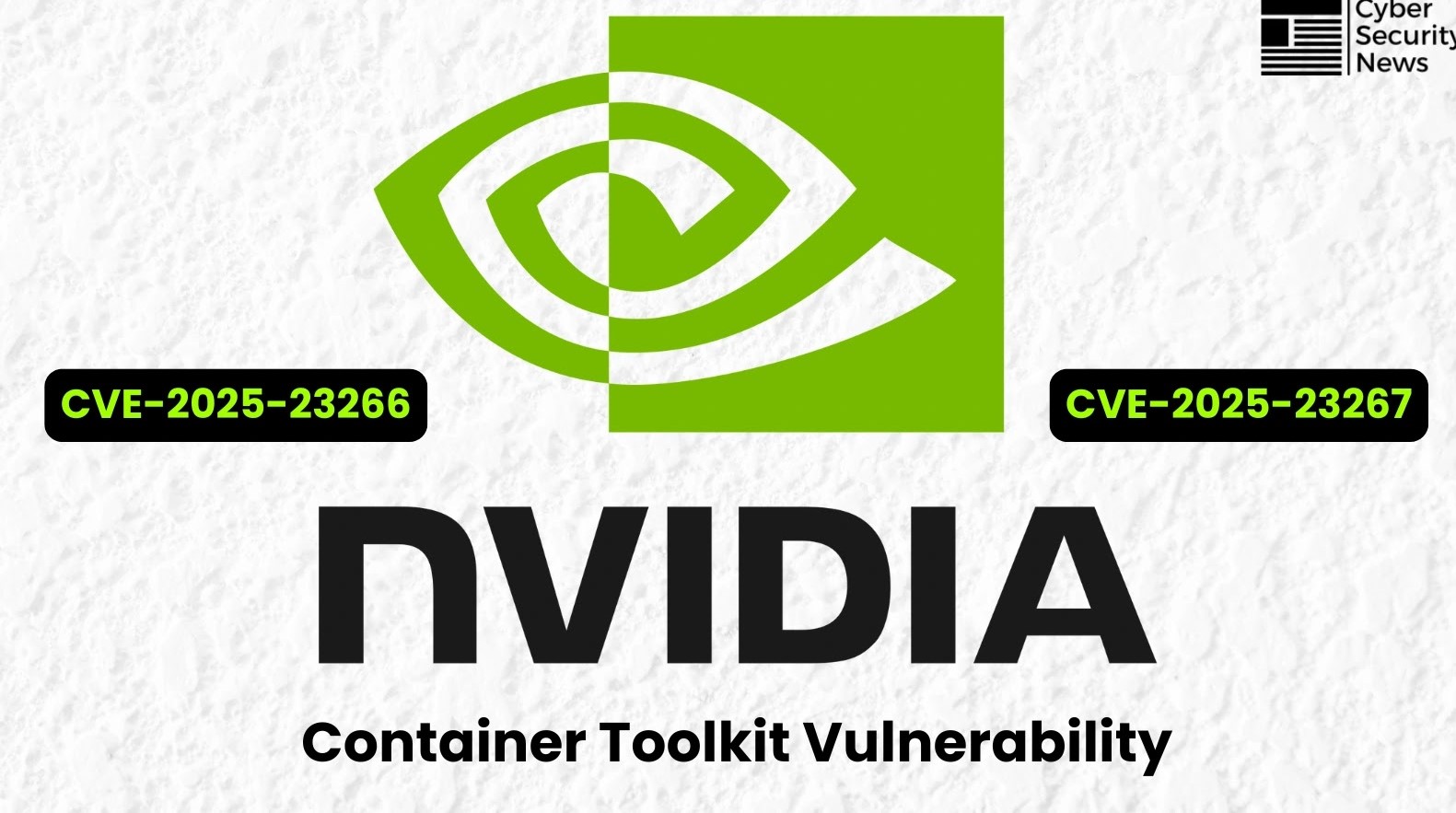
NVIDIA Container Toolkit Vulnerability Allows Elevated Arbitrary Code Execution
In the intricate landscape of modern computing, containerization and GPU acceleration have become indispensable for various high-performance applications, from AI/ML workloads to scientific simulations. However, this power brings with it the imperative of security. A recently disclosed set of vulnerabilities in NVIDIA’s Container Toolkit and GPU Operator highlights a critical risk: the potential for attackers to gain elevated arbitrary code execution. These flaws underscore the constant need for vigilance and timely updates in environments leveraging these powerful technologies.
Understanding the Vulnerabilities: CVE-2025-23266 and CVE-2025-23267
NVIDIA has issued critical security advisories addressing two significant vulnerabilities that could allow malicious actors to compromise systems running their Container Toolkit and GPU Operator. While specific technical details are often withheld during initial disclosure to prevent exploitation, the severity lies in their potential for arbitrary code execution with elevated permissions.
- CVE-2025-23266: This vulnerability impacts the NVIDIA Container Toolkit. While the exact exploit mechanism is not detailed in the public advisory, the designation implies a flaw that could be leveraged to execute unauthorized code within the container environment, potentially escaping its usual isolation boundaries or elevating privileges within the host system.
- CVE-2025-23267: This separate vulnerability affects the NVIDIA GPU Operator. As the GPU Operator manages GPU resources for containerized applications, a flaw here could offer an attacker a pathway to execute code that interacts directly with the underlying hardware, leading to significant system compromise.
The common thread between these vulnerabilities is the ability for an attacker to achieve elevated arbitrary code execution. This means they could run any code they choose, with higher privileges than they would normally possess, leading to data theft, system disruption, or further network penetration.
Affected Versions and Impact
The scope of these vulnerabilities is broad, impacting a significant range of deployments relying on NVIDIA’s container ecosystem:
- NVIDIA Container Toolkit: All versions up to and including 1.17.7 are vulnerable.
- NVIDIA GPU Operator: All versions up to and including 25.3.0 are vulnerable.
Organizations utilizing these tools in their CI/CD pipelines, cloud environments, or on-premise data centers are primary targets. The impact of successful exploitation could range from denial-of-service and data corruption to complete system takeover and lateral movement across networks. Given the critical role of GPUs in modern compute, compromising these components could have cascading effects on business operations and data integrity.
Remediation Actions and Mitigations
Immediate action is required to mitigate the risks posed by CVE-2025-23266 and CVE-2025-23267. NVIDIA has released patches addressing these vulnerabilities.
Primary Remediation:
- Upgrade NVIDIA Container Toolkit: Update to version 1.17.8 or later.
- Upgrade NVIDIA GPU Operator: Update to version 25.4.0 or later.
General Security Best Practices (Complementary):
- Principle of Least Privilege: Ensure that your containerized applications and the services running them operate with the minimum necessary permissions. Review user and service accounts associated with your Container Toolkit and GPU Operator deployments.
- Regular Patching: Establish a robust patch management policy for all software components, especially those related to container orchestration and hardware interaction.
- Network Segmentation: Isolate critical container infrastructure from less trusted networks. This can help limit the blast radius if a vulnerability is exploited.
- Runtime Monitoring: Implement continuous monitoring of container activity for anomalous behavior, unauthorized process execution, or unusual network connections.
- Container Image Scanning: Regularly scan your container images for known vulnerabilities and ensure they are built from trusted base images.
- Host System Hardening: Ensure the underlying host operating systems are patched, hardened, and regularly audited for security configurations.
Tools for Detection and Mitigation
Leveraging appropriate cybersecurity tools is crucial for identifying vulnerable systems and fortifying your container environment.
| Tool Name | Purpose | Link |
|---|---|---|
| Trivy | Open-source vulnerability scanner for container images, filesystems, and Git repositories. | https://aquasecurity.github.io/trivy/ |
| Clair | Open-source static analysis tool for vulnerabilities in application containers. | https://github.com/quay/clair |
| Falco | Cloud-native runtime security, designed to detect unexpected behavior in Kubernetes, containers, and hosts. | https://falco.org/ |
| Docker Scout | Provides insights into container image vulnerabilities and supply chain risks. | https://www.docker.com/products/docker-scout/ |
| Kubernetes CVE Database | Official list of vulnerabilities affecting Kubernetes components. | https://kubernetes.io/docs/reference/issues-security/cve/ |
Conclusion: Prioritizing Container Security
The discovery of CVE-2025-23266 and underscores a critical reality: powerful tools like the NVIDIA Container Toolkit and GPU Operator, while enabling transformative capabilities, also present significant attack surfaces if not properly secured. For IT professionals, security analysts, and developers working with these technologies, immediate application of NVIDIA’s security updates is paramount. Beyond patching, maintaining a proactive security posture through continuous monitoring, adherence to the principle of least privilege, and regular security audits of your containerized environments is indispensable. Stay informed, stay updated, and secure your compute infrastructure.





